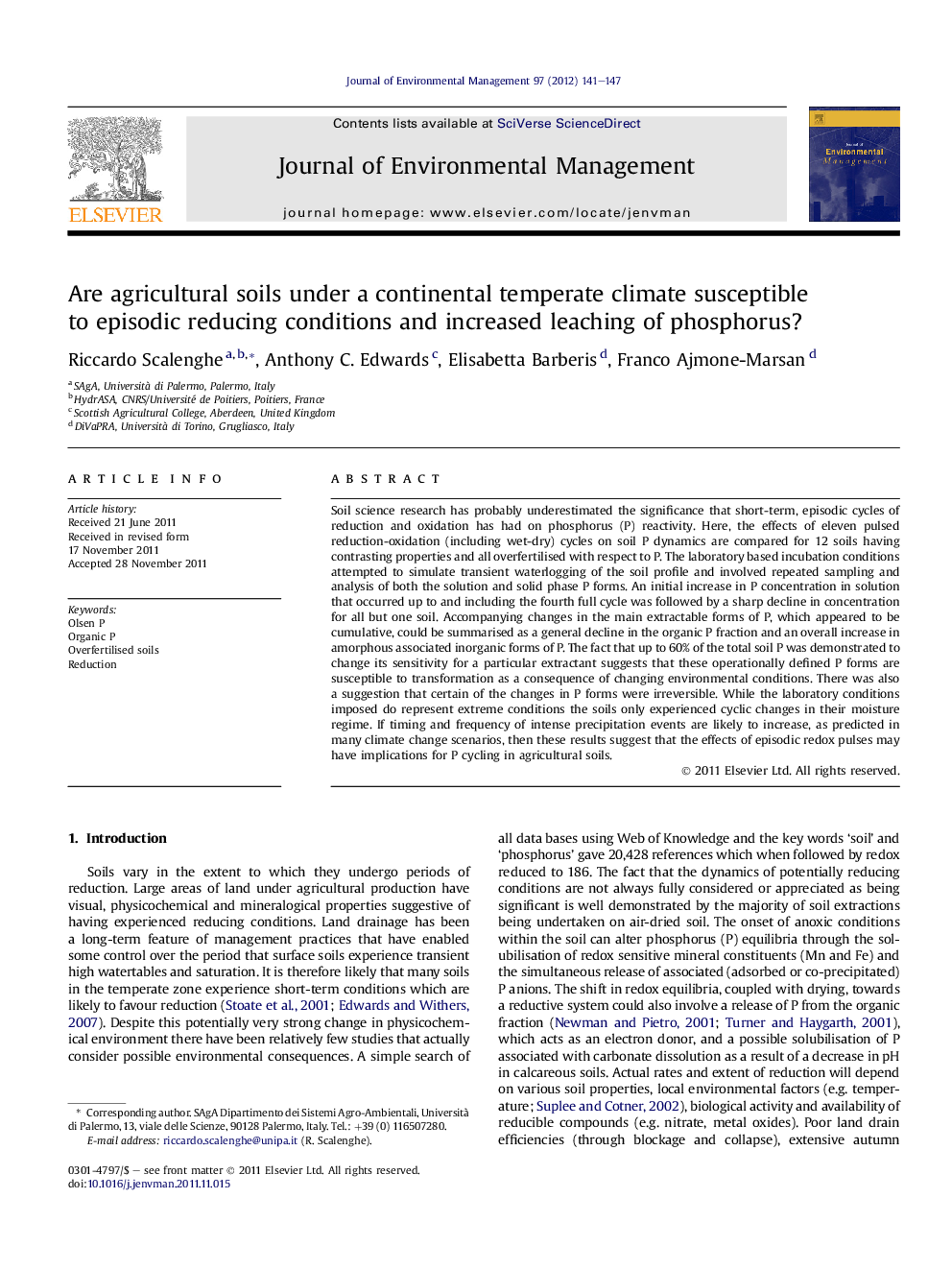| Article ID | Journal | Published Year | Pages | File Type |
|---|---|---|---|---|
| 1056877 | Journal of Environmental Management | 2012 | 7 Pages |
Soil science research has probably underestimated the significance that short-term, episodic cycles of reduction and oxidation has had on phosphorus (P) reactivity. Here, the effects of eleven pulsed reduction-oxidation (including wet-dry) cycles on soil P dynamics are compared for 12 soils having contrasting properties and all overfertilised with respect to P. The laboratory based incubation conditions attempted to simulate transient waterlogging of the soil profile and involved repeated sampling and analysis of both the solution and solid phase P forms. An initial increase in P concentration in solution that occurred up to and including the fourth full cycle was followed by a sharp decline in concentration for all but one soil. Accompanying changes in the main extractable forms of P, which appeared to be cumulative, could be summarised as a general decline in the organic P fraction and an overall increase in amorphous associated inorganic forms of P. The fact that up to 60% of the total soil P was demonstrated to change its sensitivity for a particular extractant suggests that these operationally defined P forms are susceptible to transformation as a consequence of changing environmental conditions. There was also a suggestion that certain of the changes in P forms were irreversible. While the laboratory conditions imposed do represent extreme conditions the soils only experienced cyclic changes in their moisture regime. If timing and frequency of intense precipitation events are likely to increase, as predicted in many climate change scenarios, then these results suggest that the effects of episodic redox pulses may have implications for P cycling in agricultural soils.
► Pulsed reduction favours P release with respect to continuous flooding. ► Pulsed reduction reallocates more than half of the total P to more labile fractions. ► Type and timing of irrigation, OM and watertable influence P release. ► Maintaining efficient field drainage systems reduce the risk of P solubilisation.
